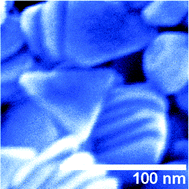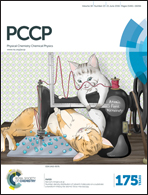Explanation of the size dependent in-plane optical resonance of triangular silver nanoprisms†
Abstract
Triangular silver nanoprisms with thicknesses of 3–5 nm and adjustable edge lengths – which can lead to nanoparticles with aspect ratios up to 1 : 50 – are quasi-two-dimensional nanoparticles. Due to high ensemble homogeneities, which are achieved by the application of a microfluid segment based preparation method, the optical properties of the silver nanoprisms can be studied directly in colloidal solution. Investigations of the shift of the longitudinal main absorption peak with varying edge length lead to a semi-empiric model in which inelastic one-photon–one-electron processes are used to explain the found absorption behavior instead of the conventional interpretation of a collective oscillation of the conduction band electrons. Independently of the inserted seed particle volumes or amounts of silver ions, all measurement series follow a linear interrelation between the spectral position of the longitudinal absorption peak and the determined edge length of the nanoprisms, which leads to the derivation of a length constant b0, which in turn can be described within the framework of the model – next to a geometry factor – exclusively by natural constants. The proposed model describes the behavior of quasi-two-dimensional noble metal nanoparticles by a dualism between the assumption of “metallic molecules” and materials with “blurred bandgaps”.


 Please wait while we load your content...
Please wait while we load your content...